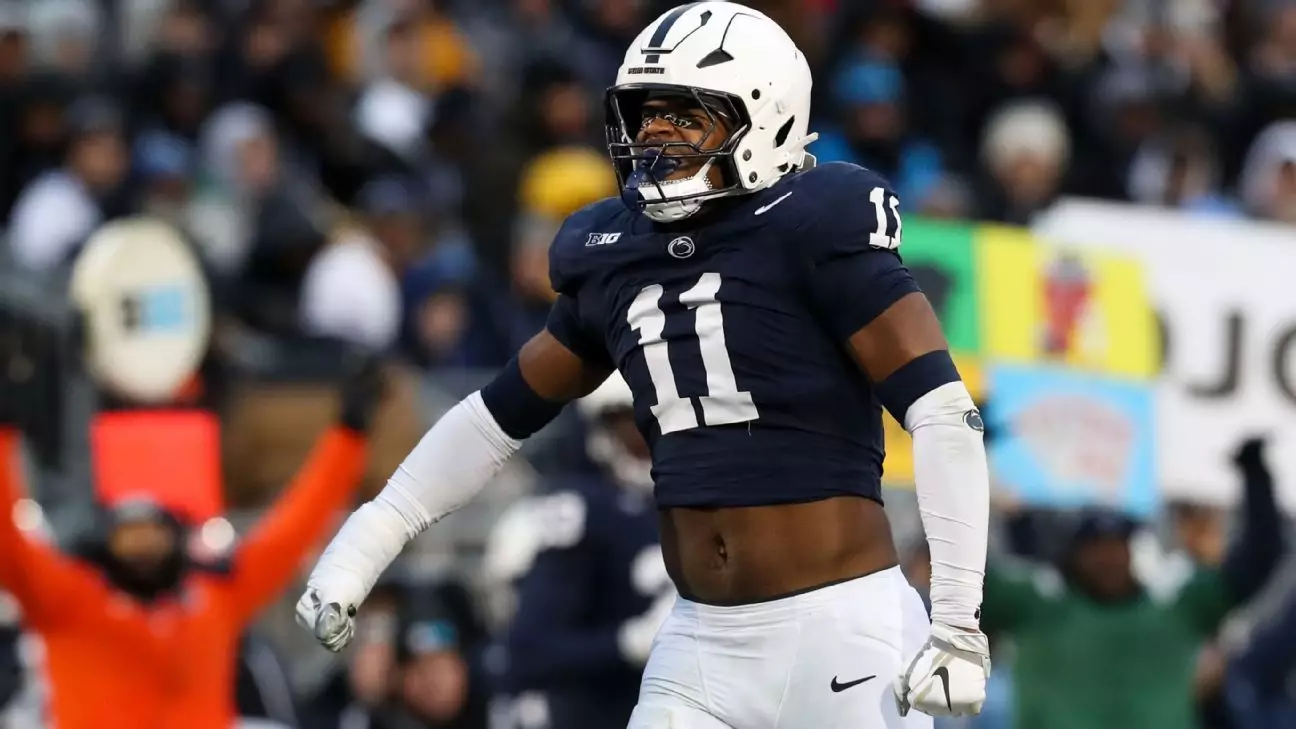The anticipation is palpable surrounding Abdul Carter, the Penn State standout who is a frontrunner for the No. 1 overall pick in the upcoming NFL Draft. As one of the most talked-about prospects, Carter’s journey takes an unexpected turn with recent health concerns casting a shadow over his bright future. A stress reaction in his right foot has surfaced, leading to a critical crossroads for the defensive lineman as he navigates the potential impact on his draft status and career trajectory.
Carter’s injury was confirmed through medical tests, complicating an already pivotal time during the NFL scouting combine. Agent Drew Rosenhaus disclosed that while opinions on whether Carter needs surgery are mixed, the outcome of this decision could significantly alter his training and preparation process. Given the stakes, which include workouts and pro days that are essential for evaluating talent, the necessity of surgery could delay his progress. With options laid out before him—either opting for surgery that would see him sidelined temporarily or bypassing the procedure in hopes of showcasing his abilities later—Carter must weigh the pros and cons carefully.
Amidst these challenges, the pressure heightens as NFL teams assess his potential. The decision on how to proceed, compounded by the opinions of medical professionals and family discussions, looms large in Carter’s immediate future. The intricate web of managing injury, recovery, and the strenuous demands of pre-draft evaluations makes this a defining moment for the young athlete.
Carter’s options present different pathways that could influence not just his draft stock but also his long-term health and career. Selecting the surgical route could ensure that any lingering issues with his foot are addressed, allowing him to return to football activities in approximately eight weeks. On the other hand, foregoing surgery in favor of demonstrating his capabilities at the Penn State pro day carries inherent risks—particularly if his foot does not hold up during such physical demands. Importantly, Rosenhaus maintains optimistic projections regarding Carter’s draft positioning, affirming that even with the injury, teams remain interested in his exceptional talent.
This sentiment reinforces the idea that NFL teams, while concerned about a player’s health, are equally drawn by their skill set and performance potential. Carter himself has been vocal about his confidence in his abilities, positioning himself as a deserving candidate for the top draft pick. His assertion of being “the best player in the country” underlines the competitive mentality that he brings to the table, illuminating how players often must grapple with resilience and self-belief even in the face of adversity.
Despite the mounting obstacles, Carter is not a stranger to the rigors of professional preparation. His response to injury in the past, including a shoulder issue that previously limited his participation in combine activities, illustrates his resilience. The combination of mental fortitude and diligent training under the watchful eye of his father has undeniably contributed to his strong performance at Penn State. Yet, as he faces this latest challenge, the reality of performing amid physical constraints shifts the narrative from pure performance to a holistic view of athlete management.
Teams at the NFL scouting combine will be evaluating not just Carter’s on-field talent but also how he handles the pressures associated with this injury. His decision to either rehabilitate a foot injury or prove he can play through it will resonate beyond the immediate timeframe, influencing how he is perceived in terms of durability and long-term viability as a professional athlete.
Carter’s future hangs in the balance as he settles on a course of action, a process that will dictate much of what lies ahead. With the NFL draft just around the corner, stakeholders, including family, coaches, and agents, operate under a highly scrutinized environment where the ramifications of each decision will likely echo in both his career and the franchise that eventually selects him. The drama surrounding his health and potential recovery bridges critical themes of athletic capability and the unpredictable nature of sports.
In a high-stakes environment ripe for speculation and scrutiny, one thing remains clear: Abdul Carter’s journey—marked by determination, injury, and aspirations of greatness—will be a narrative closely followed by football fans and analysts alike. The intersection of health and opportunity is fraught with challenges, but it could also pave the way for a remarkable comeback story, one that positions him firmly in the future landscape of the NFL.


Leave a Reply